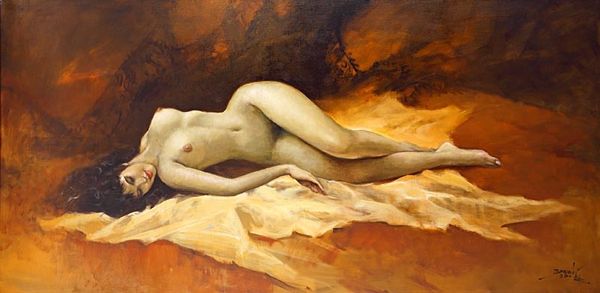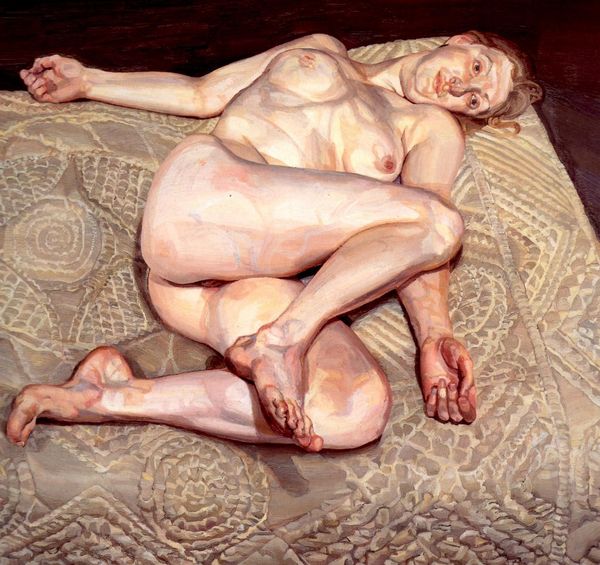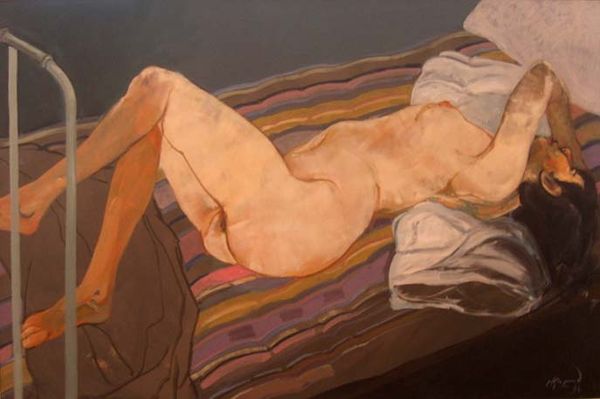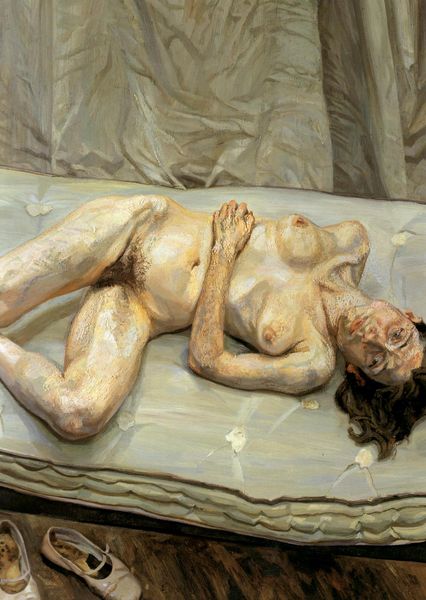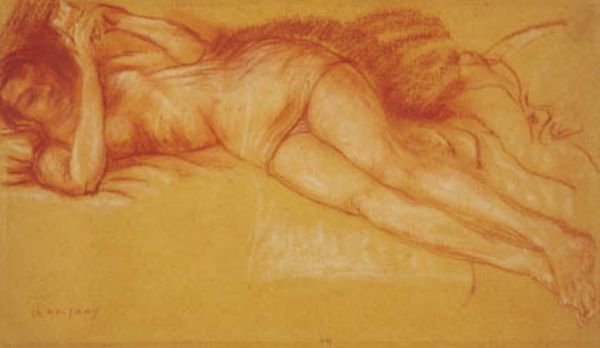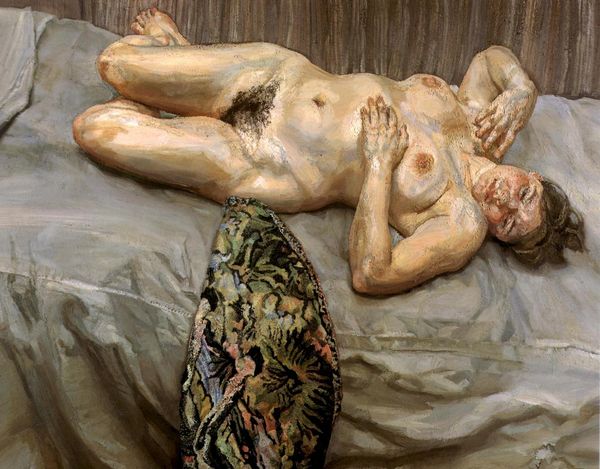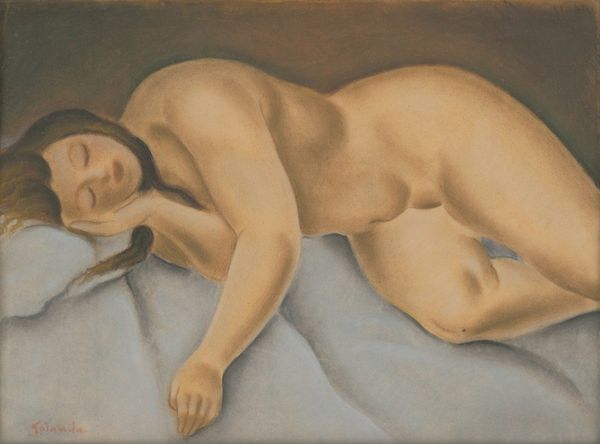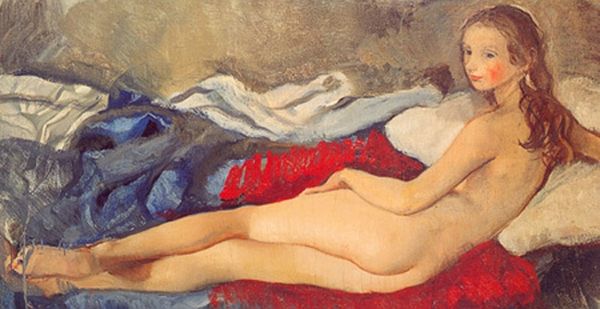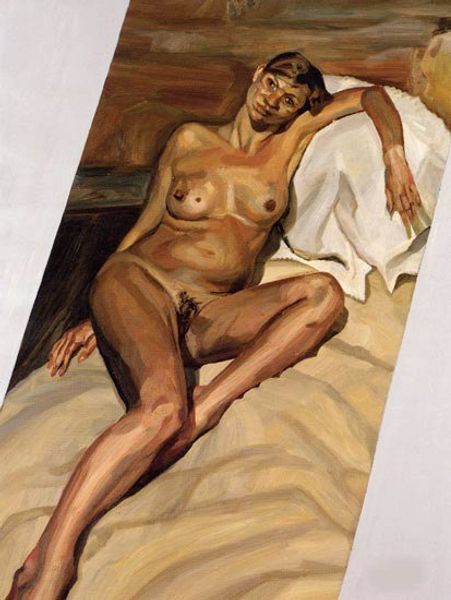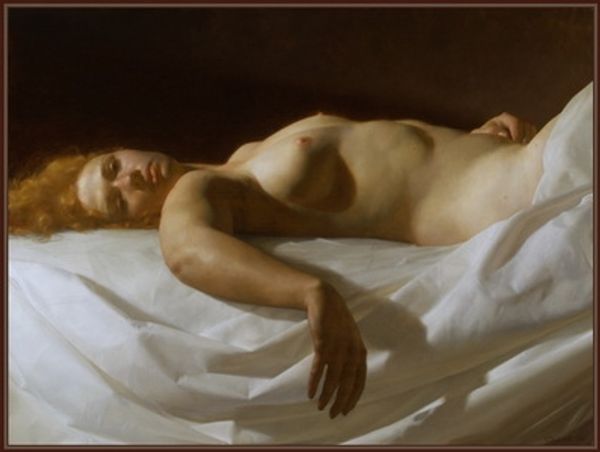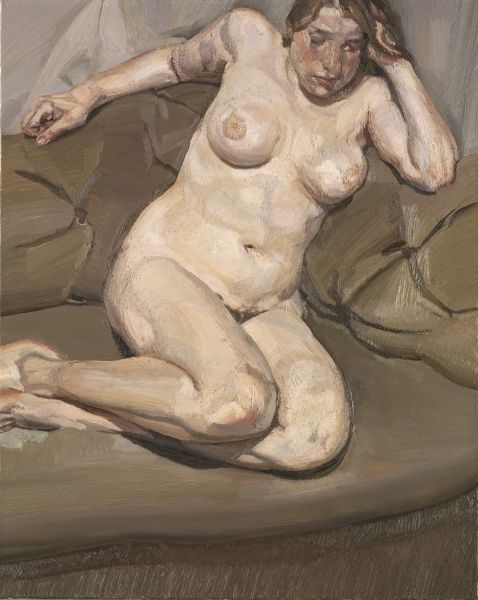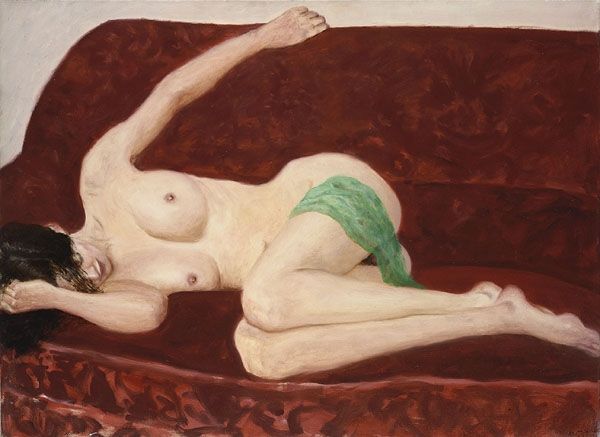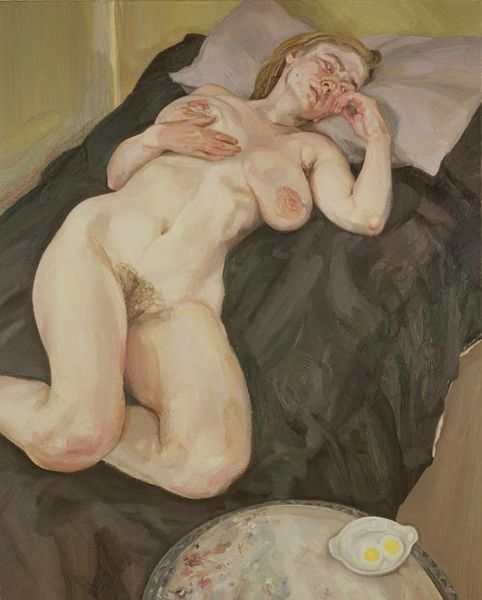
painting, oil-paint
#
portrait
#
gouache
#
acrylic
#
painting
#
oil-paint
#
figuration
#
oil painting
#
underpainting
#
painterly
#
academic-art
#
nude
#
modernism
#
realism
Copyright: Philip Pearlstein,Fair Use
Editor: We're looking at Philip Pearlstein's "Lying Female Nude on Purple Drape" from 1968, painted with oil on canvas. The woman’s body seems to take up the whole composition and feels a little confronting, but in a way that makes you stop and look closer. What do you see in this piece from a formal perspective? Curator: Initially, I am drawn to the composition's austerity. Note how Pearlstein eschews idealization, favoring instead a direct, almost clinical representation of the human form. Observe the strategic use of the purple drape – it acts as both a grounding element and a compositional tool that throws off the unity of the work. Editor: Clinical is a good word for it! There is a strange tension there between the very human body and this removed way of depicting it. Curator: Indeed. This tension arises from the objective treatment of the subject. Consider the lighting: cool and even, revealing every contour without romanticism. The painting shies from heavy contrasts of light and dark, resulting in flat tones throughout, thereby pushing us away. Editor: I hadn't thought about how the flatness adds to that feeling, and contributes to the visual composition, by not distracting from the lines and shape of the form. Curator: Precisely. Pearlstein meticulously records what is before him, foregrounding structure and form over emotional content. Do you see, for instance, how he flattens planes and foreshortens limbs? This abstraction, combined with unmodulated coloring, asserts the painting’s objecthood. It exists first as pigment arranged on a plane. Editor: It's fascinating how focusing on those formal elements, like the light and the flatness, creates a distance and changes how we see the body in the painting. Curator: The artwork challenges us to view the human body as purely a collection of shapes and surfaces. It serves to deconstruct conventional beauty ideals, leading to fresh perspectives.
Comments
No comments
Be the first to comment and join the conversation on the ultimate creative platform.
